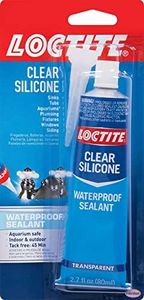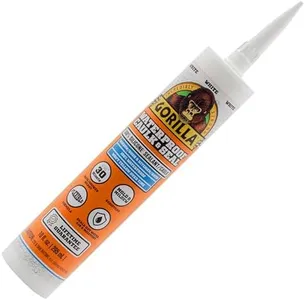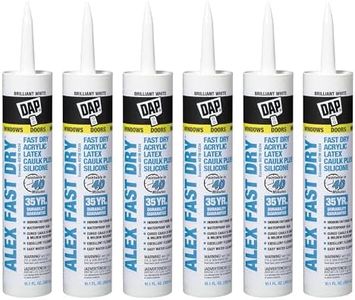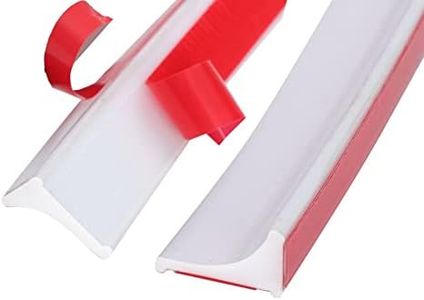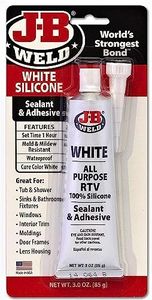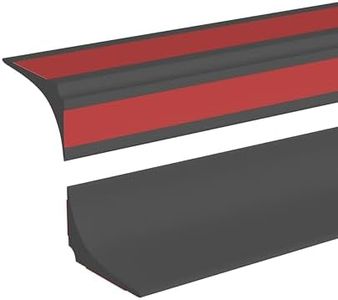We Use CookiesWe use cookies to enhance the security, performance,
functionality and for analytical and promotional activities. By continuing to browse this site you
are agreeing to our privacy policy
10 Best Bathtub Caulks
From leading brands and best sellers available on the web.By clicking on a link to a third party's website, log data is shared with that third party.
Buying Guide for the Best Bathtub Caulks
Choosing the right caulk for your bathtub is important to ensure a long-lasting, clean, and waterproof seal between your tub and surrounding surfaces. A proper caulk helps prevent water leaks, mold, and mildew growth, keeping your bathroom hygienic and reducing repair costs down the line. When picking a bathtub caulk, you should look closely at several key specifications that determine how well it will perform in a wet area like your bathroom.Type of CaulkThe type of caulk refers to the main material composition, such as silicone, latex, or a hybrid. This is important because different types have varying levels of water resistance, flexibility, and durability. Silicone caulks are generally best for high-moisture areas like bathtubs because they are very waterproof and flexible, making them less likely to crack. Latex caulks are easier to clean up but may not last as long in wet environments. There are also silicone-latex blends that try to combine the advantages of both. For most bathtub applications, silicone or a high-quality hybrid is your best choice to ensure the seal lasts against water and cleaning chemicals.
Mold and Mildew ResistanceThis specification indicates whether the caulk contains additives that help prevent the growth of mold and mildew, which can cause unsightly stains and odors. Caulks labeled as 'mildew resistant' or 'mold-resistant' are formulated to inhibit this kind of growth, which is particularly important for bathtubs and showers where moisture is constant. You should always choose a mold-resistant option for bathrooms so your caulk remains clean-looking and hygienic over time.
PaintabilityPaintability tells you if the caulk can be painted over after it cures. This is important if you want the caulk to match the color of your bathroom, trims, or tiles. Most silicone caulks are not paintable, while latex-based ones usually are. If you need to paint over your caulk, look for one that specifically says it is 'paintable'; if matching the color is not crucial and you prefer a more durable, waterproof seal, go with a 100% silicone caulk.
Drying and Curing TimeDrying or curing time refers to how long the caulk takes to fully harden or become waterproof and ready for exposure to water. Quick-drying caulks may set within an hour, while others can take up to 24 hours or longer. This is important because using the tub before the caulk has fully set can compromise the seal. If you need a quick fix and must use the tub soon, look for a 'fast-drying' or 'quick-cure' option. If timing is flexible, any standard drying time will suffice.
FlexibilityFlexibility refers to the caulk's ability to stretch and move as the bathtub and its surroundings expand and contract due to temperature and use. This matters because rigid caulk is more likely to crack, letting in water. High flexibility is essential for bathtub seams since they'll experience movement. Silicone and hybrids typically offer the best flexibility, while pure latex can be less accommodating. For lasting performance, especially in actively used bathrooms, prioritize caulks that emphasize flexibility on their labels.
Ease of Application and CleanupSome caulks are easier to apply smoothly and can be cleaned up with just soap and water, while others require solvents like mineral spirits. This is important because a clean, neat seal doesn’t just look better—it prevents leaks and buildup. Latex caulks are easier for beginners to apply and clean, but silicone caulks, while needing more careful work and cleanup with special products, give better long-term results. Think about your comfort with DIY work: if you’re new to caulking, an easier-to-apply option may help you achieve a neater finish.
